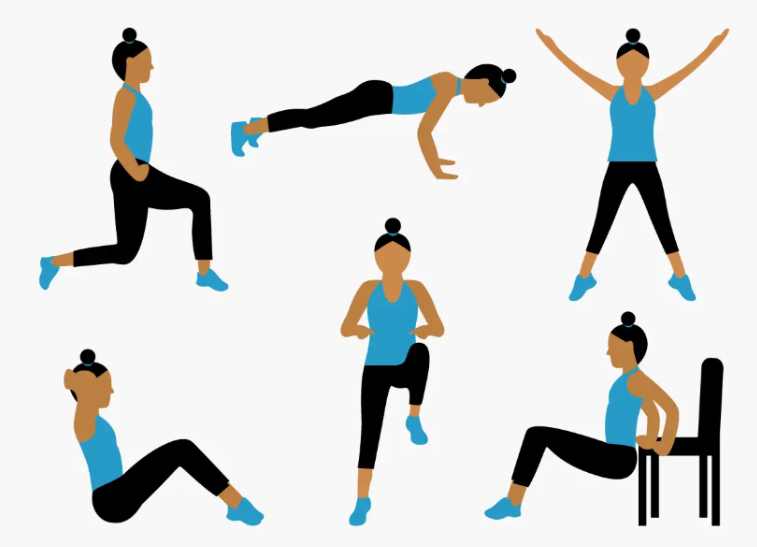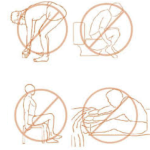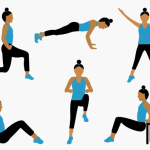Exercise Program After 6 Weeks: Building Strength and Stability
Once patients pass the 6-week milestone, the body has started initial healing, and many restrictions (such as lifting, twisting, or bending) are gradually eased under surgeon guidance. At this stage, Dr. Ricky Singh recommends introducing structured exercises to rebuild strength, stability, and confidence.
⚠️ Important: Always consult your surgeon before starting new exercises. These movements should be pain-free, slow, and controlled.
Goals After 6 Weeks
- Improve core stability to support the spine
- Increase flexibility in hips and hamstrings
- Strengthen back and glute muscles
- Re-train posture and balance for daily activities
- Prevent future back injuries
Core Stabilization Exercises
1. Pelvic Tilt with Marching
- How: Lie on your back with knees bent. Engage your core (press lower back into floor), then slowly lift one leg a few inches off the floor in a marching motion. Alternate legs.
- Reps: 10 per side
- Benefit: Strengthens core without straining the spine.
2. Dead Bug (Modified)
- How: Lie on your back with arms up and knees bent at 90°. Slowly lower one arm overhead while extending the opposite leg. Return and alternate sides.
- Reps: 5–10 per side
- Benefit: Trains cross-body coordination and deep core control.
Hip & Glute Strengthening
3. Bridging with Hold
- How: Lie on your back, knees bent. Tighten your core and glutes, lift hips until shoulders–hips–knees form a line. Hold for 5 seconds, lower slowly.
- Reps: 10–15
- Benefit: Builds glute strength to stabilize the pelvis and lower spine.
4. Clamshells
- How: Lie on your side with knees bent. Keep feet together and slowly open the top knee (like a clamshell), then close.
- Reps: 10–12 per side
- Benefit: Strengthens hip stabilizers (gluteus medius), prevents low back strain.
Flexibility & Mobility
5. Hamstring Stretch (Supine)
- How: Lie on your back, loop a towel around one foot, and gently straighten the leg upward until a stretch is felt behind the thigh. Hold 20–30 seconds.
- Reps: 3 per side
- Benefit: Relieves tension in hamstrings that often worsen back pain.
6. Piriformis Stretch
- How: Lie on your back, cross one ankle over the opposite knee, and gently pull the lower leg toward your chest.
- Reps: Hold 20–30 seconds, repeat 3x per side
- Benefit: Releases tightness in the hip muscles, reduces sciatic irritation.
Balance & Functional Training
7. Heel-to-Toe Walk
- How: Walk in a straight line, placing heel of one foot directly in front of the toes of the other.
- Reps: 10–15 steps
- Benefit: Improves balance, coordination, and gait stability.
8. Sit-to-Stand
- How: Sit in a chair with feet hip-width apart. Slowly rise to standing, using your legs (not momentum), then sit back down in control.
- Reps: 10
- Benefit: Builds leg and core strength for daily activities.
Progression After 8–12 Weeks
- Increase repetitions and hold times
- Add light resistance bands for bridging or clamshells
- Transition to low-impact cardio (stationary cycling, pool walking, elliptical)
- Avoid high-impact sports or heavy lifting until cleared by your surgeon
Safety Tips
🚨 Stop Immediately If:
- You feel sharp or radiating pain
- Pain increases during or after exercise
- Numbness or tingling in arms/legs
✅ Always Remember:
- Focus on slow, controlled movements
- Maintain neutral spine posture in all exercises
- Incorporate daily walking in addition to this routine
Remember: Consistency is more important than intensity. Progress gradually and listen to your body throughout your recovery journey.


